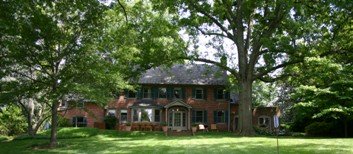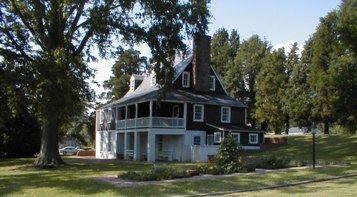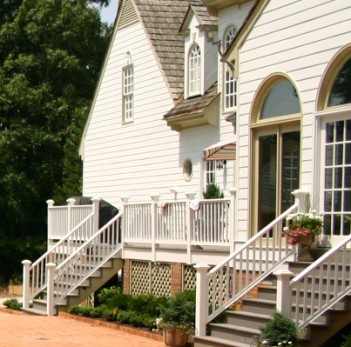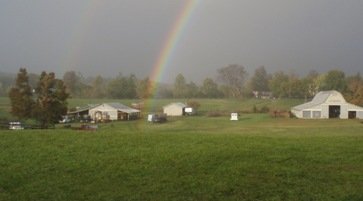|
Green Landscape Design is Smart! Green Landscape Design saves energy and water as well as uses recycled materials. Some simple strategies in developing your landscape design can help you be friendlier to the earth and create a paradise around your house.
Green Landscape Design helps keep cooling costs low by shielding a house from the heat of the sun with shade trees. Trees have a wonderful cooling effect on the outdoors as well. For optimum results, I often locate a tree used for this purpose in the field to be sure it is in exactly the right spot to shade the desired area. In a completely opposite situation, a part of a house may be intended to collect heat. A sunroom with a stone floor that acts like a collector is a good example. Of course, shrubbery, not trees would be used along the house here.
Each parcel of land is different with different requirements that influence the positioning of the house. Keep in mind that the western exposure is very hot afternoon sun. The eastern exposure gives you the morning sun which is a much softer light and with less intense heat. The northern exposure can be shady most of the time and is usually the coolest side of the house. The southern exposure gives a constant stream of light and heat of a fairly consistent temperature.
Proper drainage on your property keeps your land from eroding and is a consideration given on a green landscape design. Erosion causes soil to travel into waterways and clog them. It also causes you to lose your valuable and expensive top soil. With new construction, drainage plans are often required by the city or county where you are building. This plan shows the excavation contractor how to grade your land for optimum drainage. Collection equipment for surface water like box culverts is shown on the plan as well as the drainage lines that take the collected water to the proper place. Rain water can be collected in a pond or
large underground containers
for irrigating your landscape to keep your use of well water or city water to a minimum.
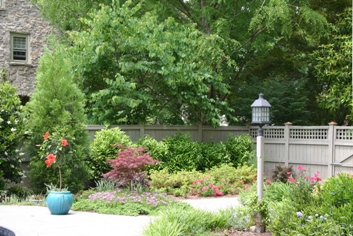
A green landscape design uses
landscape plants
that do not require a lot of water. Unfortunately in Virginia, newly planted landscapes do best if watered 2-3 times a week. There are many landscape plants that do not have a big water requirement once they are established. Shrubs that have a deep root system like holly are much more drought resistant than azaleas that have a shallow root system. Many trees, once their root systems have grown deeply into the ground, do not need much extra water except under drought conditions. The one plant that is a water hog is lawn. Fescue dies out quickly if it does not receive extensive amounts of water. Consider a lawn like Bermuda or Zoysia to save water.
Composite lumber makes a gorgeous deck and allows you to have a railing that matches the color of your house. Gone are the days of the salt-treated lumber deck rails that look like an addition to the house. Additions need to look like they have always been part of the house. Composite lumber is more expensive than salt-treated, so I have used salt-treated lumber for the deck and a composite or vinyl railing. This gives the deck an updated look and helps the deck blend with the house better.
Think about keeping our environment clean and taking care of our natural resources as you develop your green landscape design. Everyone will benefit!
Would you like some help with a landscape design problem? I would like to help! Ask me a question. You will get a quick response and a page on this site to share the information with friends and readers. I hope to be hearing from you! Please
contact me
for further information or to talk to me about my design services.
|





